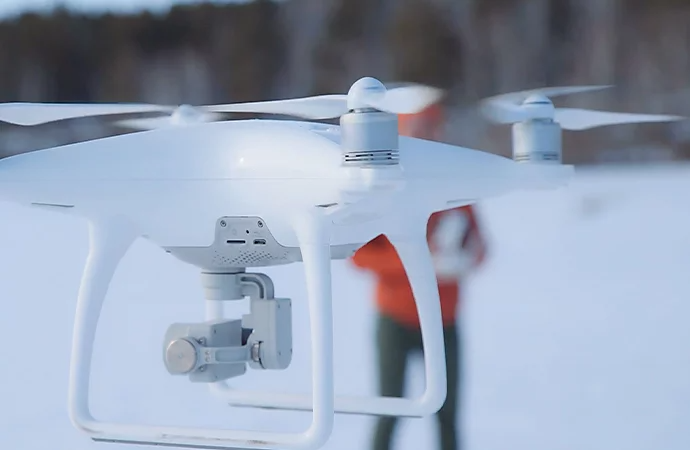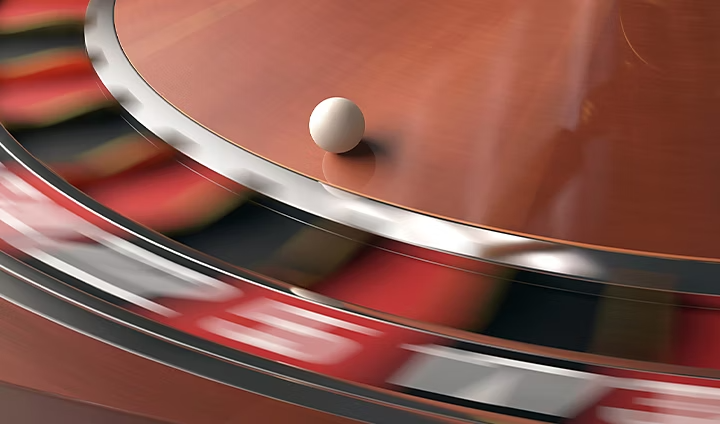VIDEO
Get the footage without the rolling shutter effect.
See how video cameras with rolling shutters can create unintended distortions, and learn how to avoid and fix those effects.

What is the rolling shutter effect?
A rolling shutter is a type of image capture in cameras that records the frame line by line on an image sensor instead of capturing the entire frame all at once. The rolling shutter sensor scans from the top of the image to the bottom, so the top of the frame is recorded slightly earlier than the bottom. This slight lag can create some unintended distortions if you’re filming fast-moving subjects or panning your video camera across a scene.
There are two types of modern image sensors: CMOS and CCD. DSLR cameras with a standard CMOS sensor or smartphones, like iPhones, are all rolling shutter cameras. Cameras with a CCD sensor, or global shutter, will record an entire image all at once, but these cameras are significantly more expensive and difficult to manufacture. “Rolling shutter cameras are efficient at capturing fast frame rates, without creating excess physical heat in the camera and drawing massive amounts of battery power,” explains filmmaker and videographer Taylor Kavanaugh. They’re an effective tool for beginners, but they do have their drawbacks.
When rolling shutter effects are noticeable.
Rolling shutter becomes an issue for videographers when movement comes into play. If you’re shooting video of fast-moving subjects, like airplane propellers spinning or guitar strings vibrating, the rolling shutter can result in wobble, or the “Jello effect.” Part of the frame may blur, or straight lines may appear curved and bent. These rolling shutter artifacts can also occur if your camera is in motion while filming, which can alter your perspective and create distracting distortions.


Unless you’re running into trouble capturing incredibly fast motion, like a child’s toy spinning on a table, a rolling shutter effect is often quite subtle. “Few people outside of the film or photography industry readily recognize a rolling shutter effect in most scenarios,” says Kavanaugh. But unintended warping can detract from the clarity of your shot, so it’s important for videographers to understand how to eliminate it when possible.
How to avoid the warp and wobble.
Master your shutter speed.
To avoid warping when recording fast motion or panning your camera, adjust your shutter speed to twice your frame rate. Standard cameras shoot at 24 frames per second (fps), so the slowest shutter speed you should use is about 1/50 of a second. Keep in mind that you can’t set your shutter speed slower than your frame rate, because that doesn’t leave enough time for the sensor to capture the image.

Don’t set your shutter speed too fast either. “The human eye likes to see a certain amount of blur. If you wave your hand in front of your face, you see some blur, but you just don’t notice it. If you set a really fast shutter speed, you’ll get super crisp movement and the eye will notice that something is wrong,” explains videographer Kenton Waltz. You want a shutter speed that’s slow enough to capture a little motion blur but a setting that’s also fast enough to minimize rolling shutter distortion.
Bring the right gear.
Minimizing camera movement, or camera shake, is another tactic for reducing rolling shutter artifacts. Invest in a good tripod or steadicam to keep your camera level while panning.
If you’re shooting with a very fast shutter speed, you may need additional lighting in the scene to keep your video from being underexposed. You’ll also need more lighting when shooting in slow motion with a rolling shutter camera. If you’re shooting with a higher frame rate, like 48 to 240 frames per second, you still need to double your shutter speed. With a shutter speed of 1/500 of a second, your sensor is not exposed for very long, so the extra lighting will keep your video from being too dark. “That’s why you see a lot of slow motion videos shot outdoors in full sunlight, because you just don’t have enough light indoors to adjust for the rolling shutter,” says Waltz. If lighting issues and the rolling shutter effect are preventing you from capturing a specific shot, you can always consider capturing that motion with a different kind of shot. But if you remember to double your frame rate with the rolling shutter, and supply your sensor with enough ambient light, capturing motion with a rolling shutter is very doable.
Stabilize your video in post-production.
Sometimes rolling shutter effects happen even though you’ve adjusted your shutter speed. Historically, image stabilization in post-production has been difficult and complex to master. But with new settings in Adobe Premiere Pro, you can use the Rolling Shutter Repair effect to mitigate wobble. Apply the effect and see how simple default settings immediately counteract the warp that occurs from the rolling shutter effect. You can also further adjust settings like Rolling Shutter Rate and Scan Direction to customize the effect for every video clip. By dragging the Rolling Shutter Rate slider left or right, you can skew the image one way or another to compensate for distortion. By setting the Scan Direction, you can adjust your video for how your individual camera scans and captures a frame, from top to bottom or left to right.
By adjusting your shutter speed, camera movement, and lighting, you can save your DSLR camera and smartphone footage from falling victim to the rolling shutter effect. And if that doesn’t work, just edit out the effect with Premiere Pro.
